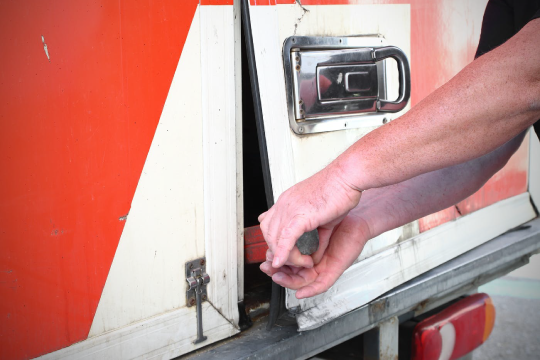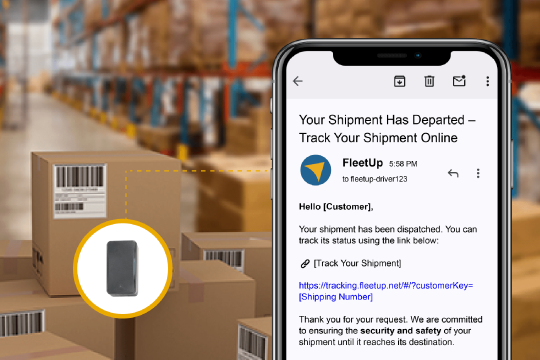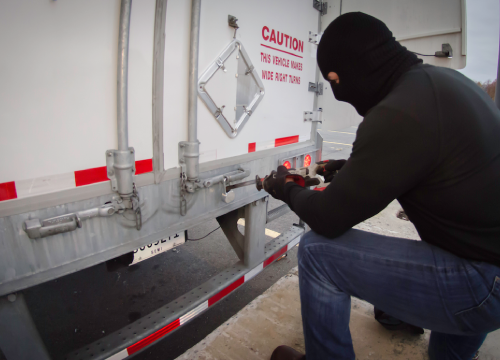Stop Microsleeping: How the Strange Sleep State Kills – and How to Prevent It
The Tired Rat in Wisconsin
In 2011, Giulio Tononi, a neuroscientist at the University of Wisconsin, connected EEG sensors to a rat’s head. He turned his EEG on, made the rat stay awake, and monitored its brainwaves. What he learned transformed science’s understanding of sleep.
Until Tononi released his results in the science journal Nature, researchers believed that the brain had two basic states – entirely awake and entirely asleep. Tonini revealed that this wasn’t true. Even though his exhausted rodent mostly stayed awake, parts of its brain shut down. The animal wasn’t awake or asleep – it was both simultaneously.
Today, this bizarre state is known as a “microsleep.” An exhausted, or even just bored, brain has the power to override the conscious will and shut down parts of itself. Microsleeps can last anywhere from a fraction of a second to a half-minute. Even though fatigue is microsleep’s most common cause, monotonous tasks can make even well-rested people microsleep. Often, victims don’t realize they’ve microslept – they nod off and wake up, thinking they’ve been conscious the entire time.
The strange phenomenon might have been funny when it affected your high school buddy who got in trouble for drifting off in Mr. Olson’s boring geometry class. But it can also be frightening and tragic. Truck driving is monotonous. Monotonous activities trigger microsleep. And no driver wants to share the highway with a 10-ton semi if the person behind the wheel doesn’t even know that they’re falling asleep again and again.
Tragedy in Weston-on-the-Green
On the afternoon of July 12th, 2015, Diana Allan drove through Weston-on-the-Green, a village about 15 minutes north of Oxford, England. Although the sky was gray, her mood was bright. The dog she loved was in the passenger seat beside her. Soon, she would learn how her grandchildren had done on their A Level tests – and she believed their grades would make her proud.
On the road ahead, brake lights flashed red. Where two highways merged, traffic was backing up. She gently slowed.
On the road behind Diana’s car, Claudiu-Ioan Almasan drove a white Renault truck. A Transylvanian immigrant, he worked two jobs to send money back to his wife and ten-year-old at home. The night before, he had stayed up a little past his usual 9 pm bedtime. Talking to his wife, he hadn’t wanted to hang up the phone.
Claudiu was a good driver with a clean record. That day, like all the days before it, he had stayed below the speed limit and taken all his required breaks. He had already completed his final delivery – dropping off milk. After he returned his truck to its lorry depot, he would clock out.
But Claudiu never got to the depot. And Diana never learned what grades her grandchildren had gotten on their A Levels.
For a moment, maybe a half-second, maybe ten seconds, Claudio succumbed to microsleep. His truck crushed Diana’s black Nissan. Witnesses said that Claudiu climbed out of his cab, fell onto the road, and cried, “Oh my God, I can’t believe I’ve killed someone. I’ve always done good in my life. I can’t believe I’ve done this.”
Paramedics pronounced Diana dead at the scene. Claudiu was arrested, tried, and sentenced to 32 months in prison.
This is the danger of microsleep. Its victims aren’t only the drivers who stay out all night, who come to work hungover, who fudge their papers, who skip breaks, who drive too many hours in a row. Even drivers who scrupulously follow the law, who memorize regulations, who know exactly how perilous the open road can be – even they have moments of weakness. They stay up an hour later than they should, not because they’re out with drinking buddies, but because they want to talk to the wife they miss, just for a little while longer.
How You Can Prevent Microsleep
While everyone enjoys a good cup of coffee, the most obvious microsleep cure isn’t a cure-all. It takes more than a hot drink to keep yourself from falling asleep at the wheel. This is how to beat microsleep:
1: Identify Causes
If you suffer from these disorders, you’re at high risk of microsleeping:
- Sleep deprivation.
- Sleep disorders including insomnia and sleep apnea.
2: Practice safe behaviors
The best way to avoid microsleeping is to avoid exhaustion. Stay well-rested by:
- Sleeping from seven to nine hours nightly.
- Going to bed at the same time every night and getting out of bed at the same time every morning.
- Eating healthy foods.
- Avoiding caffeine before sleeping.
- Abstaining from alcohol the night before taking a long drive.
- Driving with a partner who will take the wheel if you start feeling drowsy.
3: Spot Symptoms
You could be on the verge of microsleeping if you experience any of these symptoms:
- Daydreaming.
- Blinking slowly.
- Yawning.
- Body jerks, such as your head falling slowly, then jerking up.
- Bad driving, such as hitting a highway’s rumble strip, missing an exit, or drifting out of your lane.
4: Wake Up!
If you’re on the road and think you’re on the verge of microsleeping, there’s only one cure:
- Pull over, drink some coffee, then take a twenty to thirty minute nap. The best way to beat exhaustion is to sleep, but sleeping for longer than a half hour can make you more, not less, groggy. Fortunately, caffeine won’t boost your energy until about thirty minutes after being ingested, so a quick drink followed by a short nap will get you refreshed and ready to go.







